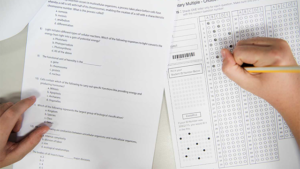Home » Commentary » Opinion » NAPLAN can ensure better outcomes
· Ideas@theCentre
 Parents are increasingly aware that schools need better assessment and accountability if there’s to be improvement in educational outcomes.
Parents are increasingly aware that schools need better assessment and accountability if there’s to be improvement in educational outcomes.
In effect, the latest in a series of NAPLAN reviews — initiated by education ministers of the eastern states — proposes modifying NAPLAN and renaming it as the Australian National Standardised Assessment (ANSA).
The new tests would cover maths more narrowly, literacy more broadly, and introduce a new creative and critical thinking assessment.
It does, however, double down on the need to keep standardised testing and for all schools and students to participate. This will disappoint education unions and state governments that routinely scapegoat NAPLAN rather than address the need for fundamental education improvement.
Ongoing divisive debates over NAPLAN have diverted attention from making it work better. One of the opportunities to upgrade it is the time of school year and grades that are tested.
It’s appropriate to get the timing of the tests right. They are currently held in mid-May each year for students in grades 3, 5, 7, and 9. Testing students in these grades doesn’t provide schools with the most practical information on students’ capabilities. And by the time results become available to teachers, they can’t always make adjustments to best meet students’ needs.
The review’s plan to address this is for students to sit the tests near the start of the school year. That would be a mistake because it will basically test how much learning was forgotten over the summer holidays, rather than how much has been learned in a given year.
Instead, the tests should be held towards the end of the year — better aligning with curriculum. That would provide schools and teachers a clearer picture of incoming students’ capabilities with each year’s intake — better supporting their remedial efforts. It will also make it easier to hold individual teachers accountable for performance, rather than passing the buck.
To ensure NAPLAN better matches with students’ and schools’ key transition points, tests could be held at the end of Years 2, 4, 6, 8, and 10. That would provide markers of achievement as they finish primary schooling years (and enter secondary school), enter senior secondary, or leave school.
Rather than replace or rebadge NAPLAN, constructively upgrading it is key to it becoming a more effective resource for students, educators, parents, and policymakers.
There’s been substantial commitment made in recent years toward a national curriculum, national assessment, and a tool for tracking performance.
Seeing that these all work better in advancing student outcomes has clear benefits to all who have a stake in Australia’s educational performance.
NAPLAN can ensure better outcomes